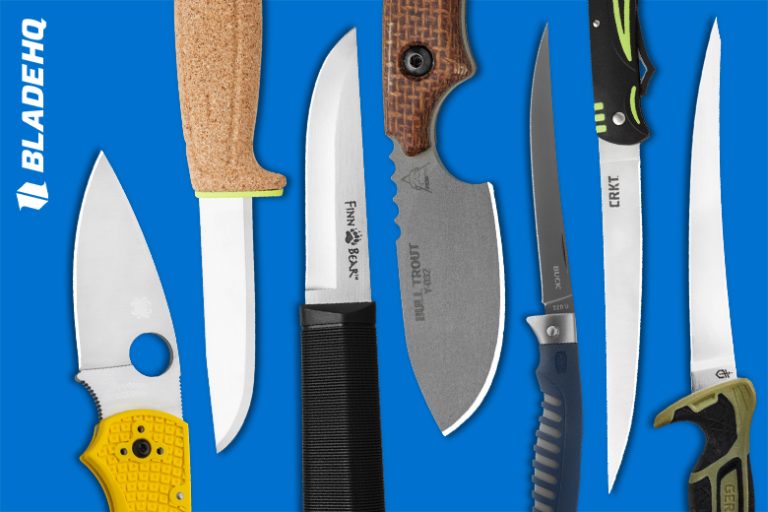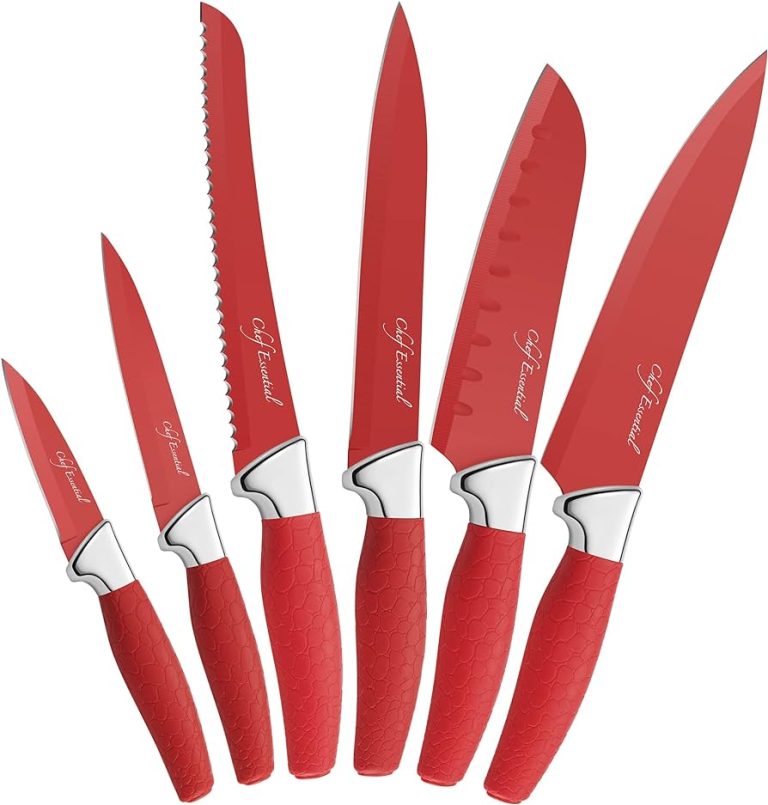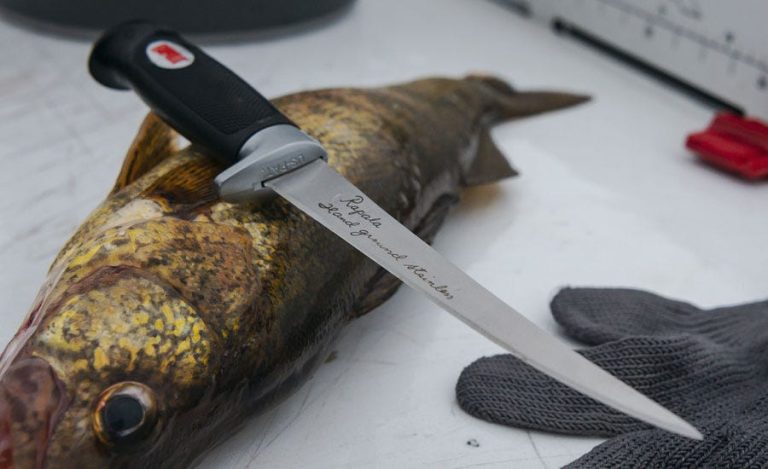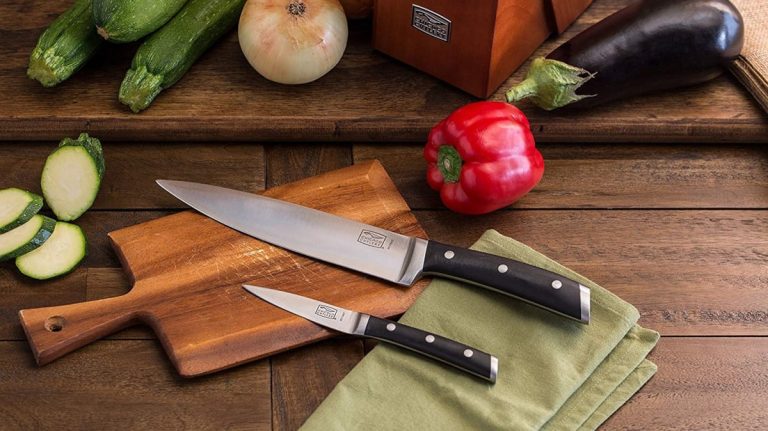Japanese Fillet Knife : The Essential Tool for Precision and Perfection.
A Japanese fillet knife is a precise and efficient tool for slicing and deboning fish. Introducing the Japanese fillet knife – a must-have for any professional chef or home cook who wants to achieve flawless filleting and deboning of fish.
This specialized knife is known for its razor-sharp blade and ergonomic design, making it effortless to achieve clean and precise cuts. The Japanese fillet knife features a slender and flexible blade, designed to glide through fish flesh, ensuring minimal wastage and maximum yield.
Its fine edge ensures superior precision, allowing you to effortlessly remove bones and skin with minimal effort. With a Japanese fillet knife in your kitchen arsenal, you can achieve professional-level results, enhancing the presentation and taste of your seafood dishes.
:max_bytes(150000):strip_icc()/best-fish-fillet-knives-FT-LFT0221-4be235a80e3b4be4ab21c42c570532f4.jpg)
Credit: www.foodandwine.com
Understanding The Japanese Fillet Knife
Japanese fillet knives have a rich history and are renowned for their exquisite craftsmanship. The traditional Japanese knife-making techniques employed in creating these knives enhance their precision and performance. Each knife is carefully crafted by skilled artisans, who combine age-old methods with modern technology to create tools that are both functional and beautiful. The unique features of these knives set them apart from their counterparts. The blade is typically made from high-carbon stainless steel, ensuring longevity and resistance to corrosion. The thin, sharp edge allows for incredibly precise cuts, making it the ideal tool for filleting fish and other delicate tasks. The handle is often made from durable wood, providing a comfortable grip and adding to the overall aesthetic appeal. Whether you are a professional chef or a passionate home cook, a Japanese fillet knife is a valuable addition to your kitchen arsenal.
The Versatility Of Japanese Fillet Knives
The Japanese fillet knife is a kitchen essential that offers unrivaled versatility. Its ability to handle a wide range of culinary tasks makes it an indispensable tool for both professional chefs and home cooks.
When it comes to filleting, deboning, and slicing fish, the Japanese fillet knife truly shines. The sharp, thin blade allows for precise and delicate cuts, ensuring clean fillets and minimal waste. Its flexibility and maneuverability make it effortless to navigate around bones and joints.
But the potential of a Japanese fillet knife extends beyond fish. It can effortlessly tackle vegetables, fruits, and other delicate ingredients. The exceptional sharpness and precision of the blade make it perfect for slicing through the thinnest cuts without damaging the texture or structure of the food.
Whether you’re a seafood enthusiast or a culinary enthusiast, the Japanese fillet knife is a must-have tool that will elevate your cooking experience. Its versatility and high performance make it an invaluable addition to any kitchen.
Choosing The Perfect Japanese Fillet Knife
Choosing the perfect Japanese fillet knife requires understanding the various blade types, lengths, and materials available. Consider factors such as **grip**, **handle design**, and **balance** to ensure precise maneuverability. Japanese fillet knives are renowned for their exceptional craftsmanship and superior cutting ability.
Blade types include yanagiba, deba, and usuba, each designed for specific cutting tasks. Yanagiba knives have long, slender blades for slicing raw fish with precision. Deba knives are robust and ideal for filleting fish and poultry. Usuba knives are vegetable knives with a thin, flat blade for precise vegetable cuts.
Blade length is another important consideration. Longer blades are suitable for larger fish and cuts, while shorter blades offer greater control for intricate work.
Additionally, blade materials greatly impact performance. High-carbon stainless steel is commonly used for its sharpness and durability, while Damascus steel offers a stunning aesthetic appeal.
Choose a Japanese fillet knife that fits comfortably in your hand and has an ergonomic handle design for extended use. Finally, consider the balance of the knife to ensure easy maneuverability and reduced strain during cutting.
By carefully considering these factors, you can select the ideal Japanese fillet knife that suits your specific needs and provides exceptional cutting performance.
The Science Behind Japanese Fillet Knives
The Japanese fillet knife is a remarkable tool that combines exceptional craftsmanship and advanced technology. Its superior quality can be attributed to the science behind its design and construction. Examining the anatomy of a Japanese fillet knife reveals key components that contribute to its effectiveness. The blade, edge, and spine are meticulously crafted to ensure optimal performance. The blade, often made of Damascus steel, offers superior strength and sharpness. This type of steel is renowned for its unique composition, which involves layering different metals to create a blade that is both durable and flexible. The edge of a Japanese fillet knife plays a crucial role in its performance. It is sharpened to perfection, enabling precise and effortless cutting. It also possesses exceptional edge retention, allowing it to maintain its sharpness over extended periods of use. This outstanding edge retention is achieved through a combination of precise bevel angles and high-quality steel. The significance of Damascus steel lies in its ability to create a blade that is not only visually appealing but also highly functional. By harnessing the strength and sharpness of this material, Japanese fillet knives are able to deliver exceptional cutting performance. |
Caring For Your Japanese Fillet Knife
Proper storage and maintenance play a crucial role in extending the lifespan of your Japanese fillet knife. To maintain optimal performance, honing and sharpening techniques are essential. Regularly honing the blade, using a honing rod at a 15-degree angle, helps to realign the edge and keep it sharp. For sharpening, using whetstones with different grit levels is recommended. Start with a coarse grit and gradually move to finer grits for a polished edge.
When it comes to cleaning, handwashing the knife is highly recommended. Use a mild dish soap and warm water, gently scrubbing the blade with a soft sponge. Avoid dishwasher use as it can damage the blade’s edge. After cleaning, thoroughly dry the knife with a towel to prevent rust and moisture buildup. For storage, consider using a knife sheath or a knife block to protect the blade and prevent accidents. By following these proper storage and maintenance practices, you can preserve your Japanese fillet knife’s pristine condition, ultimately enhancing its longevity.
Expert Tips And Techniques For Filleting With A Japanese Fillet Knife
Expert Tips and Techniques for Filleting with a Japanese Fillet Knife
Mastering the essential skills for precision filleting
Filleting with a Japanese fillet knife requires precision and expertise. To slice with ease, proper hand positioning and cutting techniques are crucial. It is essential to maintain a steady grip on the knife, with your fingers comfortably wrapped around the handle. When cutting, apply gentle pressure and use smooth, controlled motions to ensure clean and precise slices. Additionally, deboning and preparing fish with utmost precision can be achieved by following specific techniques. Start by placing the fish on a non-slip surface, then remove the bones and skin by cutting along the natural contours of the fish. This technique helps maximize yield and ensures the fillet retains its shape. With these expert tips and techniques, you can master the art of filleting with a Japanese fillet knife.
Showcasing Japanese Fillet Knives In Culinary Delights
Japanese fillet knives are a true masterpiece in the culinary world. These knives offer unparalleled precision and craftsmanship, making them the perfect tool for creating exquisite Japanese cuisine. From traditional recipes to modern creations, these knives unlock a world of culinary delights.
Renowned chefs from around the world have been inspired by the artistry of Japanese fillet knives, using them to craft dishes that showcase their precision. These knives are not just tools, but extensions of the chef’s creativity, allowing them to slice with finesse and elevate the visual appeal of their dishes.
Whether you are a professional chef or a passionate home cook, exploring the use of Japanese fillet knives in traditional recipes can be a truly rewarding experience. From delicate sashimi to perfectly cut sushi rolls, these knives provide the accuracy and sharpness needed to bring out the best flavors in every dish.
So, if you are looking to enhance your culinary skills and unleash your creativity in the kitchen, consider investing in a Japanese fillet knife. It’s a small step that can make a big difference in the taste and presentation of your Japanese-inspired creations.
Innovations And Modern Adaptations Of Japanese Fillet Knives
Japanese fillet knives have come a long way in terms of innovation and modern adaptations. Today, you can discover contemporary designs that beautifully combine tradition and innovation, offering the best of both worlds. One exciting trend is the exploration of hybrid knives that blend elements of Japanese and Western fillet knives. These knives bring together the precision and sharpness of traditional Japanese blades with the durability and versatility of Western knife designs. It is fascinating to see how these hybrid knives have captured the attention of chefs and home cooks alike, offering them a unique and efficient tool in the kitchen.
Furthermore, the future of Japanese fillet knives is promising, with evolving trends and new technological advancements. As the culinary world continues to evolve, Japanese knife manufacturers are adapting to meet the changing needs of chefs. From high-quality materials to ergonomic handles and innovative blade designs, the future holds exciting possibilities for Japanese fillet knives. Whether you are a professional chef or a cooking enthusiast, these innovations ensure that you can achieve precision and excellence in your filleting tasks.
| Advantages of Japanese Fillet Knives | Features of Hybrid Knives | New Technological Advancements |
|---|---|---|
| Unmatched sharpness | Precision and versatility | Improved blade materials |
| Superior craftsmanship | Durable and ergonomic handles | Innovative blade designs |
| Ease of maneuverability | Efficient filleting and slicing | Enhanced edge retention |
Conclusion
A Japanese fillet knife is a powerful tool that offers precise and effortless cutting through its sharp and narrow blade. With its high-quality craftsmanship and unique design, this knife stands out among its counterparts. Its durability and ability to retain its sharpness for a long time make it a reliable choice for professionals and home cooks alike.
The ergonomic handle ensures comfortable grip and reduces the risk of hand fatigue during long hours of use. Whether you’re a sushi chef or a cooking enthusiast, a Japanese fillet knife is a valuable investment that will elevate your culinary experience to new heights.
So, why settle for anything less when you can have the precision, performance, and reliability that a Japanese fillet knife offers? Upgrade your kitchen arsenal with this essential tool and witness the difference it makes in your culinary endeavors.






